Exploring NFC Technology in Motorola Smartphones
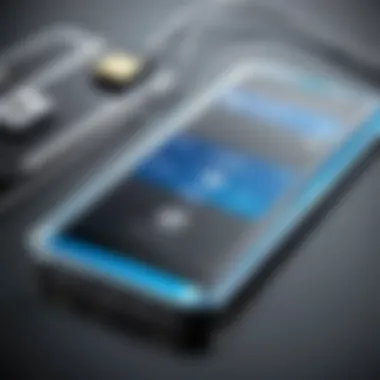
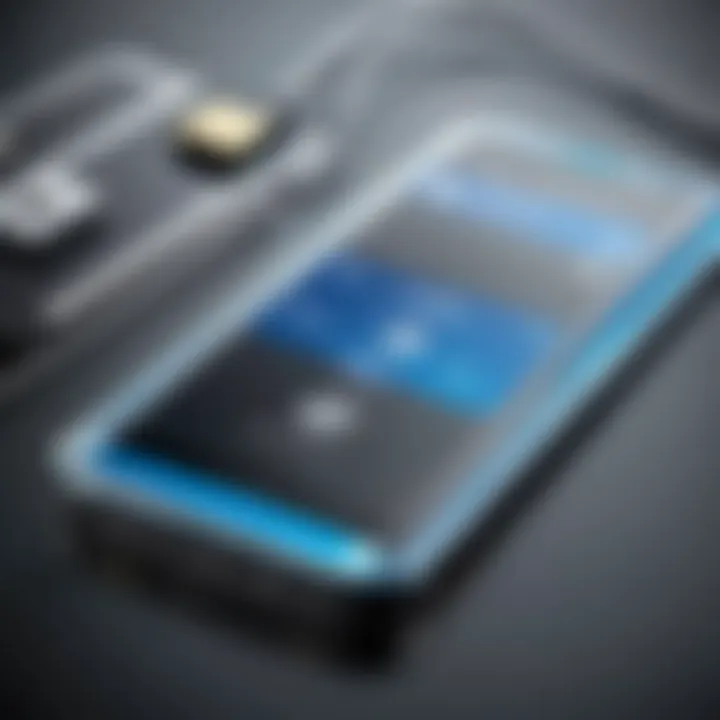
Intro
Near Field Communication, or NFC, is a technology that gently reshapes how we interact with smart devices, especially smartphones. Motorola, recognized as a pioneering brand in mobile technology, embraces NFC in its product lineup. NFC allows users to share data and make transactions seamlessly by merely bringing devices close together. This convenience reflects a larger trend in mobile connectivity, demonstrating how such technology enhances daily experiences. As consumers increasingly rely on smartphones for various tasks, understanding NFC's role becomes imperative, particularly in the context of Motorola devices.
Key Features
Motorola has integrated NFC technology into its devices thoughtfully. The key aspects, including design and build quality, along with display and performance, are essential for a deeper understanding of how NFC complements these elements.
Design and Build Quality
Motorola smartphones are designed with user experience at the forefront. The build quality is robust, which is crucial for functionality. NFC components are compact yet efficient. This integration does not detract from the overall aesthetic; instead, it enhances the device's usability.
Display and Performance
Motorola devices typically feature vibrant displays that are responsive, making NFC interactions smooth and enjoyable. When tapping phones for transactions or data sharing, the performance is crucial. Latency must be minimal, and Motorola's engineering strives to achieve fast, responsive touchpoints.
Product Specifications
Understanding the product specifications provides insight into how NFC operates in the Motorola ecosystem. Essential components like technical specifications and compatibility with various systems are key considerations when evaluating NFC's effectiveness.
Technical Specifications
Motorola has incorporated NFC capabilities across multiple device ranges. This feature includes support for various protocols such as ISO/IEC 14443, which is essential for contactless payment methods and data exchange. The underlying software also ensures seamless integration with apps designed for NFC functionality.
Compatibility and Connectivity
NFC in Motorola devices supports interoperability with other NFC-enabled gadgets. This compatibility extends to smart payment options, loyalty cards, and data sharing with compatible devices. As more consumers adopt NFC technology, Motorola's commitment to connectivity remains evident.
"NFC technology not only simplifies transactions but also pushes the boundaries of mobile interaction, making it more intuitive and secure for users."
Closure
Incorporating NFC technology into Motorola devices embodies the brand's focus on innovation and user convenience. By understanding its implementation, users can maximize their experiences, leveraging the simplicity of NFC for transactions and data sharing. As the technology evolves, so too will Motorola's commitment to enhancing connectivity through NFC, ensuring its place in the future of mobile communication.
Prologue to Motorola NFC
Near Field Communication (NFC) technology has become an essential feature in modern smartphones. Motorola, a prominent player in the mobile sector, has integrated NFC in many of its devices. This section highlights why this technology matters, particularly in the context of Motorola smartphones.
NFC is a short-range communication protocol that enables data transfer between devices within close proximity. For Motorola, leveraging NFC means providing consumers with a seamless experience in various applications such as mobile payments, data sharing, and connectivity with smart accessories. As consumers increasingly seek convenience and efficiency in their mobile interactions, NFC stands out as a valuable asset in achieving these goals.
The importance of understanding NFC technology goes beyond its functionalities. It also encompasses user privacy, security concerns, and the evolving landscape of mobile technology. In a world where connectivity is paramount, grasping the nuances of NFC in Motorola devices empowers users to make informed choices about how they interact with their gadgets.
Defining NFC Technology
NFC, or Near Field Communication, is a wireless communication technology that allows data exchange between devices at close range, typically a few centimeters. It operates on a simple principle: two devices initiate a connection by being physically near each other. The technology uses electromagnetic radio fields to transmit data, enabling functionalities such as mobile payments, access control, and easy data sharing.
This technology is often compared with Bluetooth and Wi-Fi, but NFC distinguishes itself with its simplicity and speed. Unlike Bluetooth, which requires user authentication and a more extensive setup, NFC allows devices to communicate almost instantaneously, making it particularly user-friendly.
Moreover, NFC's versatility adds to its appeal. It can work with various devices, including smartphones, tablets, and smart wearables. In Motorola smartphones, NFC not only enhances everyday tasks but also opens avenues for innovation in how users interact with their devices and environment.
In summary, understanding NFC technology is vital for appreciating its role in Motorola devices. Its user-friendly nature and capability to streamline daily tasks make it an influential part of the mobile experience.
History of NFC in Smartphones
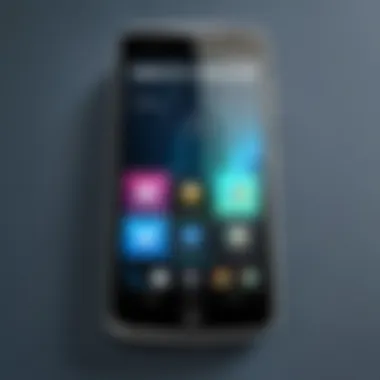

The adoption of Near Field Communication (NFC) in smartphones has evolved significantly. Its origins, notable milestones, and how it became integral to mobile technology are crucial to understanding its current role in devices like Motorola smartphones. By exploring this history, readers can appreciate the advancements in connectivity and consumer convenience that NFC has brought to the mobile experience.
Early Adoption of NFC
NFC technology was initially developed in the early 2000s, but its widespread adoption in smartphones started a bit later. Companies like Sony and Philips played essential roles in early NFC development. The first major smartphone to incorporate NFC was the Nokia 6131, launched in 2006. This moment marked the beginning of NFC technology in mobile devices.
The technology slowly caught on, with Google Wallet being unveiled in 2011 as a mobile payment solution using NFC. This was a critical shift, as mobile payments began to dominate discussions about NFC's utility. Motorola recognized the potential of NFC early on and introduced it in some of its models around the same time.
"NFC was a game changer for mobile interactions, providing a seamless way for devices to communicate without the need for complex setup processes."
Evolution of Motorola's Offerings
Motorola's integration of NFC in its smartphones reflects the brand's forward-thinking approach. The company added NFC capabilities to its devices to enhance user experience, particularly focusing on mobile payments, data transfer, and wireless connection with accessories. From the Motorola Razr series to the more recent Moto G models, the brand has consistently included NFC as a standard feature.
As NFC technology matured, Motorola adapted its offerings. The addition of Google Pay compatibility made its devices more appealing to users. This allowed consumers to use their Motorola devices not just for calls or texts, but also for secure transactions and engagement with smart devices. The expansion of NFC functionality also paved the way for innovations like NFC-enabled smart tags and keyless entry systems for vehicles.
As devices became more connected, Motorola's NFC capabilities allowed it to stay competitive with other brands. The flexibility of NFC in facilitating various applications contributed greatly to Motorola’s evolution in the smartphone market.
Ultimately, the journey of NFC technology in Motorola devices underscores the importance of adaptability and consumer needs in a rapidly changing tech landscape. By understanding these historical elements, readers can better appreciate both the current applications and future directions of NFC in Motorola smartphones.
Understanding NFC Technology
Near Field Communication (NFC) has become a pivotal technology in the realm of mobile devices, specifically in Motorola smartphones. Understanding NFC technology entails recognizing its mechanics and its role in enhancing user experiences. The significance of NFC lies in its ability to facilitate instantaneous connectivity and communication between devices. This is particularly relevant in the context of mobile payments, data sharing, and the interaction with smart accessories.
How NFC Works
NFC operates through radio frequency identification (RFID) technology. This allows two devices to communicate wirelessly when they are brought close together. The effective range of NFC is typically within a few centimeters, ensuring a secure connection that limits accidental interactions. When a user brings their Motorola device near an NFC-enabled terminal or another device, a process called 'pairing' occurs. This pairing establishes a secure data exchange channel.
Key aspects of how NFC works include:
- Initiator and Target: In an NFC transaction, one device acts as the initiator, typically the one that reads information, while the other is the target, often transmitting data.
- Passive and Active Modes: NFC can operate in active mode, where both devices generate their own fields, or passive mode, where one device generates the field and the other simply responds.
- Data Transmission Speed: The data transfer rate ranges from 106 kbit/s to 424 kbit/s, facilitating quick exchanges in scenarios such as mobile payments or contactless ticketing.
Technical Specifications
Understanding the technical specifications of NFC is crucial for grasping its capabilities and limitations in Motorola devices. The technology conforms to various standards which ensure device compatibility and safe operation. Notably, NFC functions under the ISO/IEC 14443 and ISO/IEC 15693 standards.
Technical specifications include:
- Frequency: NFC operates at a frequency of 13.56 MHz, which is a globally recognized standard for contactless communication.
- Distance: The effective communication range is typically 0-10 centimeters, with a working range of about 0-4 centimeters for practical applications.
- Data Security: NFC employs multiple layers of security protocols, including encryption and secure routing, which are vital for securing payment transactions.
- Power Consumption: NFC uses low power, making it suitable for battery-operated devices. The passive operation mode consumes significantly less energy.
In summary, a robust understanding of NFC technology in Motorola devices highlights its integral role in mobile innovation. The mechanics of NFC and its technical specifications underscore its value, setting the stage for its applications and user interactions in Motorola products.
Applications of NFC in Motorola Devices
The applications of Near Field Communication (NFC) technology in Motorola devices stand as a testament to innovation in modern mobile connectivity. This technology is embedded within a range of functionalities that enhance user experience and streamline various tasks. By examining these applications, we can understand how NFC resonates within the smartphone ecosystem, particularly in Motorola’s offerings.
Mobile Payments
The integration of NFC technology has revolutionized how transactions are conducted. Motorola devices leverage this capacity, allowing users to make mobile payments with ease. When a user taps their smartphone against a payment terminal, the NFC system initiates a secure transaction. This process utilizes protocols such as Host Card Emulation, which avoids the need for physical cards.
The benefits of mobile payments in Motorola smartphones include:
- Convenience: Users can make purchases without needing to carry multiple cards, making the payment process faster.
- Security: Transactions use encryption to protect sensitive information, adding layers of protection against fraud.
- Integration with Apps: Applications like Google Pay or Samsung Pay are fully supported, providing users a seamless shopping experience.
As more retailers adopt NFC technology, the potential for mobile payments to become mainstream increases. This trend not only highlights how Motorola keeps pace with consumer demand but also underscores the practicality of NFC in everyday life.


Data Transfer
Another compelling application of NFC in Motorola devices is its capability for quick data transfer. The standard operation involves simple gestures - a quick tap between two NFC-enabled devices exchanges information swiftly. This feature is particularly beneficial for sharing contact information, photos, or files between users.
The advantages include:
- Speed: The transfer occurs almost instantaneously, eliminating the wait times associated with Bluetooth pairing.
- Simplicity: Users can initiate data transfer without navigating complex settings or configurations.
- Versatility: NFC can transfer various forms of information ranging from text, URLs, to media files, enhancing interaction between devices.
In this context, Motorola devices stand out by incorporating this technology into their operating systems effectively, fostering easier communication in both personal and professional environments.
Smart Tags and Accessories
Smart tags and accessories further reflect the practical uses NFC technology provides in Motorola smartphones. Through smart tags, users can automate certain actions on their devices simply by tapping against a tag. For instance, an NFC tag placed at home can adjust phone settings to silent mode during bedtime.
Key features of smart tags include:
- Customization: Users can program tags to perform specific functions based on preferences, enhancing user personalization.
- Integration with Other Devices: These tags can interact with other smart devices around the house, creating a more connected living environment.
- Cost-Effectiveness: NFC tags are relatively low-cost and easily accessible, promoting widespread adoption.
The versatility of NFC technology in these applications denotes how Motorola embraces current trends, making life more manageable and connected for its users. This effectiveness drives the broader acceptance of NFC as a staple feature in smartphones.
User Experience with NFC
The user experience with NFC technology in Motorola devices is a crucial aspect that influences how consumers interact with their smartphones. Understanding the usability of NFC can reveal its importance in everyday tasks, from simple mobile payments to seamless data sharing. Motorola has designed their devices with NFC functionalities to enhance convenience, thereby enriching the overall user experience.
Ease of Use
One of the primary advantages of NFC technology is its simplicity. Users encounter an intuitive experience with just a tap or a swipe. For instance, conducting mobile payments via Google Pay or other payment services becomes a straightforward task. Users need to unlock their Motorola devices and bring them close to a payment terminal to complete transactions swiftly. This quick action helps in reducing the complexity often associated with digital payments.
NFC technology also facilitates easy pairing of accessories. Users can connect wireless headphones or smartwatches simply by tapping them against their phone. This instant connection saves time and eliminates the frustration often linked with Bluetooth pairing.
Furthermore, Motorola has integrated NFC into their interface, making it accessible. Users can easily find NFC settings in the device menu. They can enable or disable features based on personal preferences, allowing for a customized user experience.
Current Challenges
Despite the advantages of NFC technology, challenges still exist. One common issue is the range of connectivity. NFC requires close proximity, typically within four centimeters. This limited range may hinder its effectiveness in situations where users prefer distance, such as when using public payment stations. Additionally, there can be confusion among less tech-savvy users about which devices are compatible with NFC features.
Security is another significant concern. Although NFC transactions often utilize encryption, potential vulnerabilities can arise. Users should be cautious about enabling NFC in public spaces, as unauthorized access to data can happen if devices are not adequately protected. Motorola devices do provide options for security settings, but users must actively engage with these features to ensure safety.
In summary, while NFC technology in Motorola devices offers significant benefits that enhance user experience, understanding and addressing its challenges will be key for consumers. The ease of use promotes adoption, but ongoing education on its limitations and security measures is equally important for users to fully leverage this technology.
Security Considerations
In the age of increasing digital connectivity, the security of personal data becomes paramount. NFC technology, while incredibly convenient, does pose several security challenges that users must consider. Understanding these security considerations is crucial for individuals who rely on smartphones, such as those from Motorola, for everyday transactions and data sharing. This section will delve into potential vulnerabilities and ways users can protect their data when utilizing NFC features.
Potential Vulnerabilities
Despite its convenience, NFC technology comes with a set of vulnerabilities that can be exploited by malicious actors. Key concerns include:
- Eavesdropping: Since NFC uses radio waves, attackers can potentially intercept communications between devices if they are in proximity. This risk can increase during transactions or when transferring sensitive data.
- Data Corruption: There is a risk that transmitted data could be replaced or corrupted during transmission, leading to faulty transactions or errors in shared information.
- Unauthorized Access: If a device falls into the wrong hands, unauthorized users can engage with NFC features without permission, which can result in data theft or unexpected charges.
- Man-in-the-Middle Attacks: In these scenarios, an attacker might impersonate one of the devices, intercepting data and potentially altering communication, thus compromising security and privacy.
To mitigate these risks, manufacturers like Motorola have included various security protocols in their devices. However, user awareness and preemptive measures also play a significant role in safeguarding personal information.
Protecting Your Data
User vigilance is essential when it comes to NFC technology. Here are several practices that can enhance security:
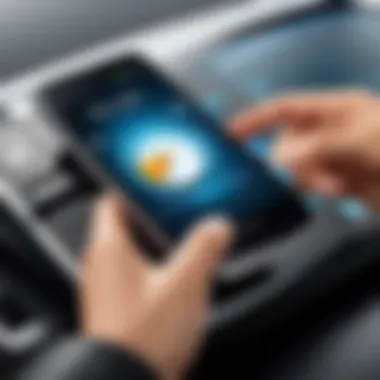
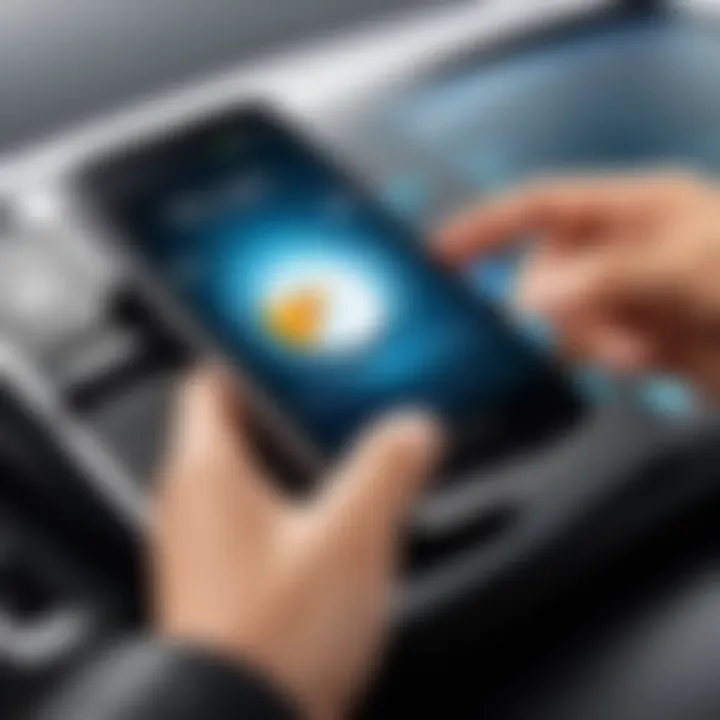
- Be Mindful of Your Surroundings: Always be aware of who is around when using NFC to avoid unwanted interception. Keep your device away from potential eavesdroppers during sensitive transactions.
- Turn Off NFC When Not in Use: Disabling NFC when it's not needed is a simple way to minimize potential attacks. This limits the exposure of your device to unwanted access.
- Use Trusted Devices Only: When sharing data or making transactions, stick to trusted devices and entities. Avoid engaging with unfamiliar devices that may pose a security risk.
- Update Your Device Software: Keeping your software updated ensures you have the latest security patches that can address previously discovered vulnerabilities. Motorola regularly provides updates to enhance security features.
- Utilize Strong Authentication Methods: Setting up strong passwords, biometric security, or enabling two-factor authentication can provide an additional layer of protection.
"Security is not a product, but a process." – Bruce Schneier
By implementing these guidelines, users can significantly reduce the risk associated with NFC technology. Coupled with Motorola's advancements in security features, individuals can enjoy the benefits of NFC technology with peace of mind.
Comparative Analysis
The role of comparative analysis in understanding the implementation of NFC technology within Motorola devices is crucial. It allows consumers to gauge the effectiveness and practicality of Motorola's NFC features against those of competing brands. This comparison contributes to informed decision-making among users, specifically those who prioritize technology in their mobile experience.
NFC in Other Brands
NFC technology is not exclusive to Motorola. Many smartphone manufacturers have integrated this capability into their devices. Brands such as Samsung, Apple, and Google offer robust NFC functionalities.
- Samsung: Their NFC implementation typically includes features like Samsung Pay and Smart Switch for easy data transfer. Users find these tools help streamline numerous tasks, from payments to data migration.
- Apple: Apple has integrated NFC into its Apple Pay service, ensuring a seamless transactional experience. However, unlike Android, Apple's approach restricts NFC's use to specific applications.
- Google: Google’s Android platform facilitates NFC through various applications like Google Pay and Android Beam, emphasizing versatility and user control.
These comparisons highlight a few points. First, although NFC serves the same fundamental purpose across brands—fostering quick communications—it exhibits varying functionalities. Each company uniquely enhances user experience through compatible applications and ecosystem integration.
Motorola's Unique Features
Motorola sets itself apart with distinct NFC features aimed at enhancing user engagement and satisfaction.
- Migrate App: This application allows users to transfer data seamlessly to new Motorola devices. It simplifies the process of setting up a new phone, making it less daunting to move contacts, photos, and other data.
- Moto Actions: This functionality takes advantage of NFC by enabling users to perform specific tasks such as launching apps with gestures. It helps in optimizing user interaction with the device quickly.
- Expandable NFC Capabilities: Motorola has shown interest in developing unique NFC applications tailored to its user base. With such features, users can enjoy an enriched experience tailored to their preferences.
The comparative analysis is essential in recognizing these unique elements, allowing Motorola audiences to appreciate how their devices measure against other smartphone brands. Through understanding both the broader market and specific brand offerings, users can make educated decisions regarding their NFC usage and overall smartphone experience.
Future of NFC in Motorola Devices
The significance of exploring the future of NFC technology in Motorola devices cannot be overstated. As consumer expectations continue to evolve, so does the role of NFC in enhancing smartphone capabilities. It is essential to examine how NFC can continue to serve the needs of tech-savvy individuals.
Upcoming Developments
Motorola is poised to leverage NFC technology for future device enhancements. With potential upcoming developments, a few key areas stand out:
- User Interface Improvements: Expect intuitive interactions where NFC enables seamless connections. This will likely enhance the overall user experience.
- Expanded Payment Options: Motorola could integrate additional payment platforms, allowing users to perform transactions with more flexibility and convenience.
- Smart Home Integration: Future Motorola devices may bridge connections with smart home devices using NFC to simplify user interactions and management.
These developments are not merely about keeping pace with competitors; they represent an opportunity for Motorola to redefine user interactions and enhance the smartphone experience comprehensively.
Integration with Emerging Technologies
The integration of NFC with emerging technologies offers exciting possibilities for Motorola smartphones. As technology progresses, some vital integrations may include:
- Internet of Things (IoT): NFC can facilitate device pairing in IoT ecosystems. This helps users control various devices efficiently using their smartphones.
- Wearables Connectivity: Motorola may focus on linking wearables directly to smartphones through NFC, enhancing data sharing and control capabilities.
- Augmented Reality (AR) Applications: The potential use of NFC in AR applications can create interactive experiences, taking user engagement to a new level.
Adopting these technologies positions Motorola favorably in a rapidly evolving market. By aligning NFC with current trends, Motorola can lead in innovation and offer users unparalleled benefits.
In summary, the future of NFC technology in Motorola devices is bright. Upcoming developments and integration with emerging tech will pave the way for enhanced user experiences, setting Motorola apart in a competitive landscape.
Closure
The incorporation of Near Field Communication (NFC) technology in Motorola devices marks a significant advancement in mobile communication. This conclusion brings together the key aspects discussed throughout the article, reinforcing the importance of NFC in enhancing user experiences and offering practical applications.
NFC technology facilitates seamless interactions, be it through mobile payments, data sharing, or device connectivity. Motorola's approach to integrating NFC into their smartphones has proven to be advantageous for users. The convenience of tapping a device to execute transactions or share information cannot be overstated. In an era where speed and efficiency are paramount, NFC stands as an essential feature in modern smartphones.
Summarizing Key Insights
- Relevance of NFC: NFC technology serves as a bridge between physical and digital interactions, allowing Motorola users to partake in a more connected experience.
- Usability: The simplicity of NFC use can greatly enhance user satisfaction. With just a tap or a swipe, users can access numerous functionalities.
- Consumer Impact: NFC has transformed how Motorola users engage with their devices, making mobile payments and data sharing less cumbersome than traditional methods.
- Future Prospects: The future of NFC in Motorola devices looks promising with advancements in technology that will likely expand its applications and efficiency, possibly integrating with even newer technologies.
"The potential of NFC technology is vast, and Motorola is at the forefront of this evolution. The blend of convenience and speed it offers is what today’s consumers demand."
In summary, the role of NFC in Motorola devices resonates through its transformative capabilities. As technology continues to evolve, so will the applications of NFC, ensuring that users can always stay connected and efficient in their mobile interactions.



